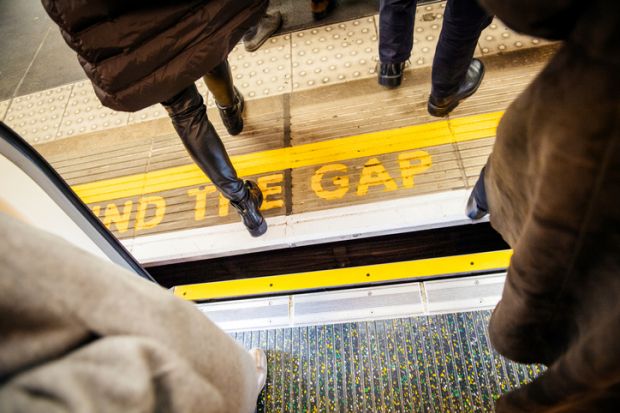The gap in entry rates to England’s most selective universities between the most and least disadvantaged backgrounds grew in 2020, after years of holding steady.
Although the number of students from the least represented UK neighbourhoods entering high-tariff institutions increased by 21.9 per cent this year – faster growth proportionally than in any other quintile – the absolute increase was the lowest of any grouping, according to analysis of Universities and Colleges Admissions Service (Ucas) data by the Office for Students (OfS).
Some 6,690 students from the most underrepresented areas were placed in a high-tariff university 28 days after A-level results day, according to the OfS research, up 1,205 on the previous year. However, the number of students from the least underrepresented areas increased by 3,460, to 35,585.
This meant the gap in entry rates widened in 2020: 5.4 per cent of UK-domiciled 18-year-olds from the most underrepresented backgrounds were admitted to a high-tariff provider this year, compared to 21.7 per cent of students from the most represented areas. The gap of 16.3 percentage points was up 1.3 percentage points year-on-year, having stayed steady at around 15 percentage points since 2016.
The OfS has set a target to almost halve the gap in entry rates at highly selective universities between the most and least disadvantaged applicants by 2024-25, and eliminate it altogether by 2038-39.
However, to measure this, it calculates the ratio between entry rates, and on this measure the gap shrank year-on-year, from 4.5:1 to 4:1.
“For equality to be improving both measures should be decreasing,” the OfS research says.
It appears that the increase in students from disadvantaged areas attending high-tariff institutions is heavily driven by the overall increase in the number of domestic students starting university this year.
Overall, 86,930 18-year-olds were placed at higher tariff universities in 2020, up from 76,425 the year before, the data show.
The OfS also highlighted the ongoing regional disparity in access to higher education. Analysis of participation by parliamentary constituency shows that the areas with the lowest levels of access to higher education are “nearly all in the industrial towns and cities of the North and Midlands, and in coastal towns”, the OfS said.
The constituencies with the largest proportions of postcodes – at least 90 per cent – in low higher education participation rates were: Nottingham North; Barnsley East; Great Yarmouth; Sheffield, Brightside and Hillsborough; Kingston upon Hull East; Birmingham, Erdington; and Stoke-on-Trent North.
In comparison, a large proportion of constituencies in London and the south east contain no postcodes with the lowest participation rates.
According to data from the Department for Education, 55 per cent of young people go into higher education in London, but only 40 per cent in the north east of England.
Chris Millward, the OfS’ director for fair access and participation, said widening access to university and supporting students once they got there “was more important than ever due to the coronavirus pandemic”.
“We want to build on the improvements to access this year, whilst tackling the new issues arising from the pandemic,” he said.
“There are, for example, increased opportunities for universities and further education colleges to work together to meet the high levels of demand we are seeing from people who want to study locally, including adults who want to retrain.
“But we need also to ensure that universities are tackling the financial and practical barriers to learning, so that all students have a fair chance to succeed.”
Register to continue
Why register?
- Registration is free and only takes a moment
- Once registered, you can read 3 articles a month
- Sign up for our newsletter
Subscribe
Or subscribe for unlimited access to:
- Unlimited access to news, views, insights & reviews
- Digital editions
- Digital access to THE’s university and college rankings analysis
Already registered or a current subscriber? Login








